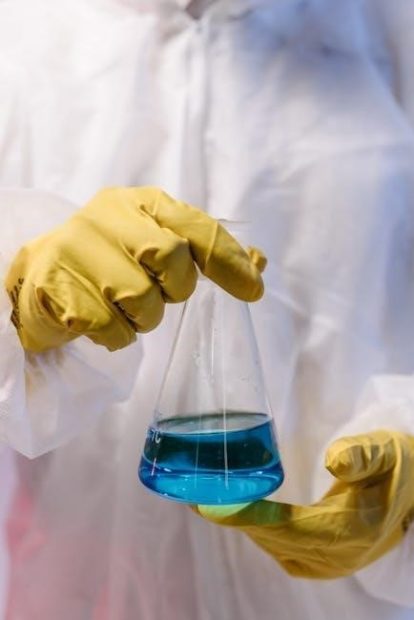Classifying Chemical Reactions: Worksheet Answers PDF
Are you looking for resources to help you understand and practice classifying chemical reactions? This page provides various classifying chemical reactions worksheets in PDF format, along with answer keys and solutions, suitable for high school chemistry. These resources cover synthesis, decomposition, single displacement, and more.
Chemical reactions are fundamental processes that involve the rearrangement of atoms and molecules, leading to the formation of new substances. Understanding these reactions is crucial in chemistry, as they govern everything from the digestion of food to the creation of new materials. To master this, it’s essential to classify different types of chemical reactions, such as synthesis, decomposition, single displacement, double displacement, combustion, and acid-base reactions. Worksheets designed for classifying chemical reactions provide practical exercises for students to identify and categorize these reactions based on their characteristics.
These worksheets often include balancing chemical equations, which is a key skill in chemistry. Balancing ensures that the number of atoms for each element is the same on both sides of the equation, adhering to the law of conservation of mass. Identifying the type of reaction involved helps in predicting the products and balancing the equation effectively.
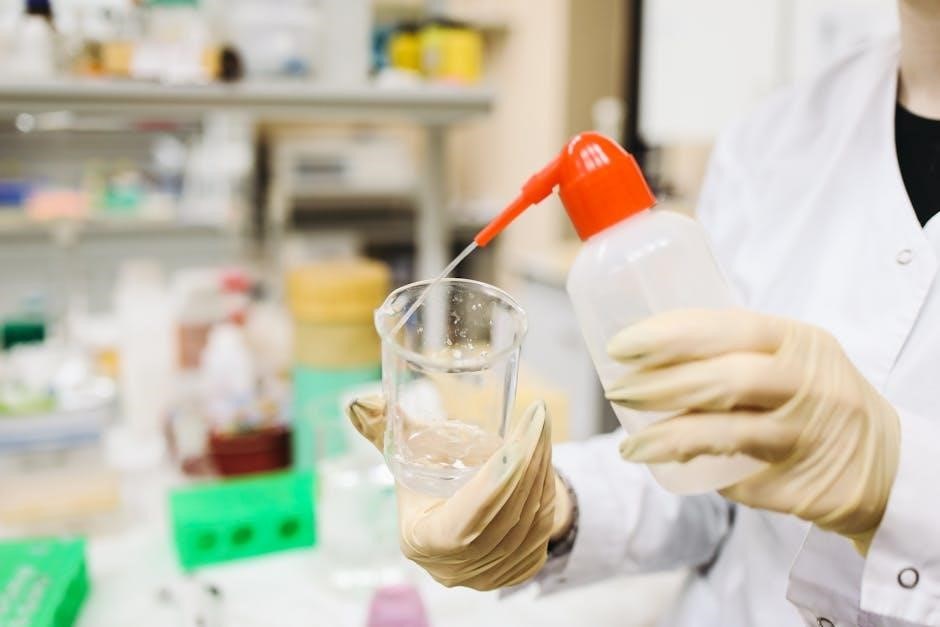
Worksheets may present a variety of chemical equations for classification, prompting students to distinguish between combination, decomposition, single replacement, and double replacement reactions. By working through these exercises, students gain confidence in their ability to recognize patterns and apply the rules governing chemical reactions. This skill is invaluable for further studies in chemistry and related fields.
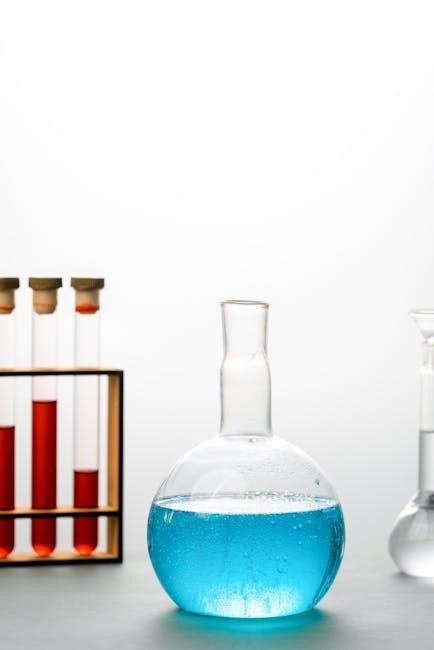
Types of Chemical Reactions
Chemical reactions are the core of chemistry, and they are classified into several types based on how atoms and molecules are rearranged. The main types include synthesis, decomposition, single displacement, double displacement, combustion, and acid-base reactions. Each type follows a specific pattern and has distinct characteristics that allow for easy identification. Understanding these types is essential for predicting products, balancing equations, and grasping the fundamental principles of chemical changes.
Synthesis reactions involve the combination of two or more reactants to form a single product. Decomposition reactions, conversely, break down a single reactant into two or more products. Single displacement reactions occur when one element replaces another in a compound, while double displacement reactions involve the exchange of ions between two compounds. Combustion reactions are characterized by the rapid reaction between a substance and an oxidant, usually oxygen, producing heat and light. Acid-base reactions involve the transfer of protons between reactants.
Recognizing these reaction types is a fundamental skill in chemistry. Worksheets often provide students with various chemical equations to classify, reinforcing their understanding of these patterns. Mastering these classifications enhances the ability to predict reaction outcomes and solve related problems.
Synthesis Reactions
Synthesis reactions, also known as combination reactions, are fundamental in chemistry. They involve the direct combination of two or more reactants to produce a single, more complex product. This type of reaction can be represented by the general equation: A + B → AB. Synthesis reactions are crucial in various industrial processes, such as the production of ammonia (NH3) from nitrogen and hydrogen.
Identifying synthesis reactions is often straightforward. Look for reactions where multiple elements or simple compounds combine to form a single, more complex compound. Examples include the formation of water (H2O) from hydrogen and oxygen, or the creation of sodium chloride (NaCl) from sodium and chlorine. Balancing these equations typically involves ensuring that the number of atoms of each element is the same on both sides of the equation.
Worksheets often feature synthesis reaction examples to help students practice identification and balancing. By recognizing the pattern of reactants combining into a single product, students can confidently classify these reactions. The key is to look for simplicity merging into complexity, a hallmark of synthesis reactions in chemical equations. Mastering this concept is vital for understanding more complex chemical processes.
Decomposition Reactions
Decomposition reactions are the reverse of synthesis reactions. In a decomposition reaction, a single compound breaks down into two or more simpler substances. This can be represented by the general equation: AB → A + B. These reactions often require energy in the form of heat, light, or electricity to initiate the breakdown. A classic example is the decomposition of water (H2O) into hydrogen (H2) and oxygen (O2) through electrolysis.
Identifying decomposition reactions involves recognizing that a single reactant transforms into multiple products. For instance, the breakdown of calcium carbonate (CaCO3) into calcium oxide (CaO) and carbon dioxide (CO2) is a common example. Balancing decomposition equations requires careful attention to ensure that the number of atoms of each element is conserved on both sides of the equation, following the law of conservation of mass.
Worksheets on classifying chemical reactions frequently include decomposition examples to test students’ understanding. Students learn to identify these reactions by looking for a single compound on the reactant side splitting into multiple products on the product side. Understanding decomposition reactions is crucial for grasping various chemical processes, including those involved in environmental science and industrial chemistry, providing a foundation for further study.
Single Displacement Reactions
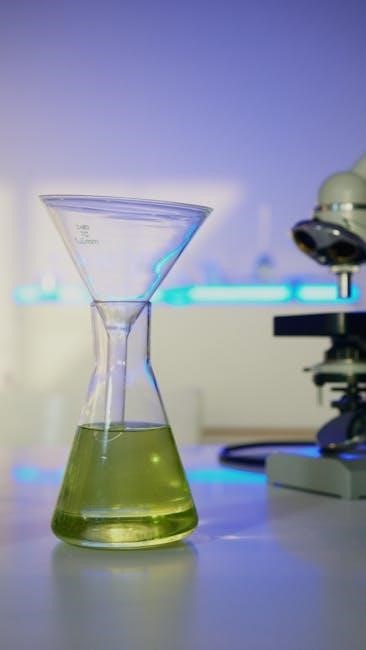
Single displacement reactions, also known as single replacement reactions, involve one element replacing another element in a compound. The general form of a single displacement reaction is A + BC → AC + B or A + BC → BA + C, where A replaces either B or C. These reactions are driven by the relative activity of the elements involved, often determined by the activity series.
In a single displacement reaction, a more reactive metal will displace a less reactive metal from its compound. For example, zinc (Zn) will displace copper (Cu) from copper sulfate (CuSO4) solution, forming zinc sulfate (ZnSO4) and solid copper. Similarly, a more reactive halogen can displace a less reactive halogen from its salt.
When classifying single displacement reactions, it’s essential to identify the element and the compound reacting, and then determine which element is being replaced. Balancing these equations requires careful attention to ensure the conservation of mass and charge. Worksheets often provide examples where students must predict the products and balance the resulting equations, reinforcing their understanding of chemical reactivity and equation balancing. Recognizing and predicting single displacement reactions is a fundamental skill in chemistry.
Double Displacement Reactions
Double displacement reactions, also known as metathesis reactions, involve the exchange of ions between two reacting compounds. The general form of a double displacement reaction is AB + CD → AD + CB. These reactions typically occur in aqueous solutions, and they are often driven by the formation of a precipitate, a gas, or a molecular compound such as water.
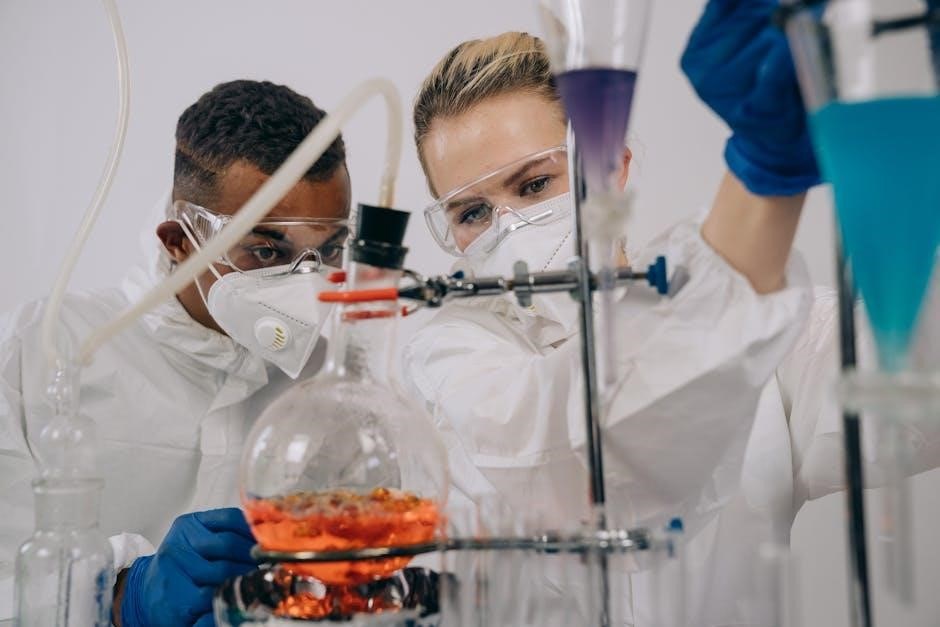
In a double displacement reaction, the cations and anions of two different compounds switch places, resulting in the formation of two new compounds. For example, when silver nitrate (AgNO3) reacts with sodium chloride (NaCl), silver chloride (AgCl), a precipitate, and sodium nitrate (NaNO3) are formed. The formation of the insoluble AgCl drives the reaction to completion.
Classifying double displacement reactions involves identifying the exchange of ions and determining if a precipitate, gas, or water is formed. Solubility rules are crucial for predicting whether a precipitate will form. Worksheets often include problems where students must predict the products of double displacement reactions, determine their states (solid, liquid, gas, or aqueous), and balance the chemical equations. Mastering double displacement reactions is essential for understanding chemical reactions in solution.
Combustion Reactions
Combustion reactions are a type of chemical reaction that involves the rapid reaction between a substance with an oxidant, usually oxygen, to produce heat and light. Combustion is an exothermic process, meaning it releases energy in the form of heat. A common example of a combustion reaction is the burning of fuels such as wood, propane, and natural gas.
In a complete combustion reaction, the reactants are converted into carbon dioxide (CO2) and water (H2O). For instance, the combustion of methane (CH4) can be represented as CH4 + 2O2 → CO2 + 2H2O. However, if there is insufficient oxygen, incomplete combustion occurs, leading to the production of carbon monoxide (CO), a toxic gas, as well as soot (unburned carbon).
Classifying combustion reactions involves identifying the presence of oxygen as a reactant and the production of heat and light. Worksheets often include problems where students must balance combustion equations and identify the products of complete and incomplete combustion. Understanding combustion reactions is essential for studying energy production, environmental science, and industrial processes. Recognizing the balanced equations and products formed during combustion is a key aspect.
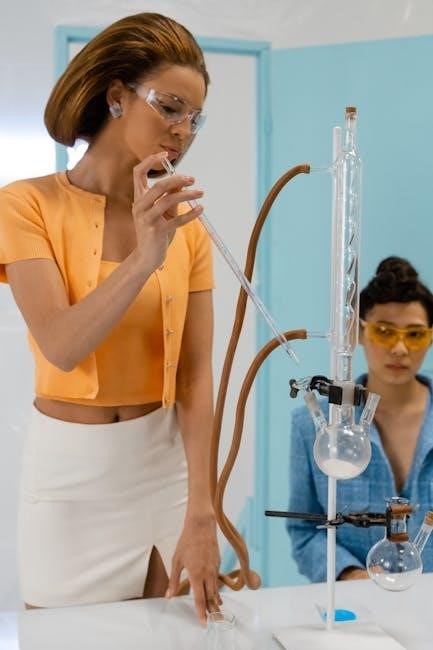
Acid-Base Reactions
Acid-base reactions, also known as neutralization reactions, involve the interaction between an acid and a base. Acids are substances that donate protons (H+ ions), while bases are substances that accept protons. In aqueous solutions, acids increase the concentration of hydrogen ions (H+), and bases increase the concentration of hydroxide ions (OH-).
A typical acid-base reaction results in the formation of a salt and water. For example, the reaction between hydrochloric acid (HCl) and sodium hydroxide (NaOH) produces sodium chloride (NaCl) and water (H2O): HCl + NaOH → NaCl + H2O. This type of reaction is fundamental in chemistry and is widely used in various applications, including titrations and pH regulation.
Classifying acid-base reactions involves recognizing the presence of an acid and a base as reactants and the formation of a salt and water as products. Worksheets often include problems where students must identify acids and bases, predict the products of neutralization reactions, and balance the chemical equations. Furthermore, understanding the concepts of strong acids, strong bases, weak acids, and weak bases is vital for correctly classifying these reactions.
Acid-base reactions are crucial in understanding chemical processes in biological systems, industrial applications, and environmental contexts.
Balancing Chemical Equations
Balancing chemical equations is a fundamental skill in chemistry, ensuring that the number of atoms for each element is equal on both sides of the equation. This principle adheres to the law of conservation of mass, which states that matter cannot be created or destroyed in a chemical reaction. Balancing equations involves adjusting the coefficients of the reactants and products until the number of atoms for each element is the same on both sides.
The process typically starts by identifying the most complex molecule in the equation and balancing the elements it contains. Then, proceed to balance the remaining elements, often adjusting coefficients multiple times to achieve an overall balance. It is crucial to only change coefficients and not the subscripts within the chemical formulas, as altering subscripts changes the identity of the substances.

Worksheets often include a variety of chemical equations to balance, ranging from simple to complex reactions. Students learn to balance equations through practice, systematically working through each element to ensure conservation of mass. Balancing chemical equations is essential for quantitative analysis in chemistry, allowing for accurate calculations of reactant and product amounts in chemical reactions.
Mastering this skill is crucial for understanding stoichiometry and predicting the outcomes of chemical reactions.
Redox Reactions
Redox reactions, short for reduction-oxidation reactions, are a crucial class of chemical reactions involving the transfer of electrons between chemical species. In a redox reaction, one substance undergoes oxidation, losing electrons and increasing its oxidation state, while another substance undergoes reduction, gaining electrons and decreasing its oxidation state. These reactions are fundamental in various chemical processes, including combustion, corrosion, and metabolic reactions.

Identifying redox reactions involves tracking changes in oxidation states of the elements involved. Oxidation states are assigned based on a set of rules, and any change in oxidation state indicates that a redox reaction has occurred. Redox reactions can be further classified into different types, such as single displacement reactions, where one element replaces another in a compound, and combination reactions, where elements combine to form a compound.
Understanding redox reactions is essential in fields like electrochemistry, where electron transfer is harnessed to generate electrical energy in batteries and fuel cells. Moreover, redox reactions play a vital role in environmental chemistry, influencing processes like the degradation of pollutants and the cycling of elements in ecosystems. Classifying and balancing redox reactions often require additional steps, such as using half-reaction methods, to account for the electron transfer.

Worksheets on redox reactions typically include exercises on identifying oxidation states, recognizing redox reactions, and balancing complex redox equations.
Classifying Reactions: Worksheet Examples
To master the classification of chemical reactions, it’s essential to work through various examples. Worksheets often provide a range of chemical equations that students must identify as synthesis, decomposition, single displacement, double displacement, combustion, or acid-base reactions. These exercises reinforce the understanding of the characteristics that define each reaction type.
For instance, a synthesis reaction might be represented by the equation A + B → AB, while a decomposition reaction could be AB → A + B. Single displacement reactions typically follow the pattern A + BC → AC + B, and double displacement reactions are often in the form AB + CD → AD + CB. Combustion reactions usually involve a hydrocarbon reacting with oxygen to produce carbon dioxide and water.
Worksheet examples also include balancing chemical equations, which adds another layer of complexity. Students must ensure that the number of atoms for each element is the same on both sides of the equation. Some examples may involve polyatomic ions or require knowledge of solubility rules to predict products accurately.
Furthermore, real-world applications can be incorporated into worksheet problems. For example, questions might ask students to classify the reaction involved in the rusting of iron or the neutralization of an acid spill. By working through these examples, students develop a deeper understanding of how to classify chemical reactions and apply this knowledge to practical situations.
Identifying Reaction Types
Identifying reaction types is a fundamental skill in chemistry, requiring a keen understanding of the patterns and characteristics associated with each category. To accurately classify a chemical reaction, one must first examine the reactants and products involved. Synthesis reactions, for example, are characterized by the combination of two or more substances to form a single compound.
Decomposition reactions, conversely, involve the breakdown of a single compound into two or more simpler substances. Single displacement reactions occur when one element replaces another in a compound, while double displacement reactions involve the exchange of ions between two compounds, often resulting in the formation of a precipitate, gas, or water.
Combustion reactions are easily identified by the rapid reaction between a substance and oxygen, typically producing heat and light. Acid-base reactions involve the transfer of protons (H+) between reactants, leading to neutralization.
Furthermore, it’s essential to distinguish between redox reactions, which involve changes in oxidation states, and non-redox reactions. Recognizing these distinct features enables students to confidently classify a wide range of chemical reactions, whether encountered in the laboratory or in real-world applications. Practice and familiarity with various examples are key to mastering this essential skill.
Worksheet Answer Keys and Solutions
Accessing worksheet answer keys and solutions is crucial for students to effectively learn and reinforce their understanding of classifying chemical reactions. These resources serve as invaluable tools for self-assessment, allowing learners to check their work and identify areas where they may need additional practice or clarification. Answer keys provide the correct classifications for each reaction, enabling students to immediately evaluate their accuracy.
Solutions, on the other hand, often offer step-by-step explanations of the reasoning behind each classification, helping students to grasp the underlying concepts and develop a deeper comprehension of the material. By comparing their own approaches with the provided solutions, students can identify any misconceptions or errors in their thinking.
Moreover, these resources facilitate independent learning, empowering students to take ownership of their education and progress at their own pace. With readily available answer keys and solutions, students can confidently tackle challenging problems and build a solid foundation in classifying chemical reactions.
Teachers also benefit from having access to these resources, as they can use them to efficiently grade assignments, provide targeted feedback to students, and identify areas where the class as a whole may be struggling.
Additional Resources for Chemistry Help
Beyond worksheets and answer keys, numerous additional resources can significantly enhance your understanding of classifying chemical reactions and chemistry in general. Online platforms such as Chemfiesta.com offer a wealth of tutorials, practice problems, and interactive simulations designed to make learning chemistry more engaging and effective. These resources often break down complex concepts into simpler, more manageable steps, catering to various learning styles.
Textbooks and study guides provide comprehensive coverage of chemical reactions, including detailed explanations, examples, and practice exercises. Look for resources that align with your curriculum and learning objectives. Tutoring services, both in-person and online, offer personalized support and guidance from experienced instructors who can help you overcome specific challenges and build confidence in your chemistry skills.

Consider exploring video tutorials on platforms like YouTube, where educators and experts provide visual explanations of chemical reactions and problem-solving strategies. Many universities and educational institutions also offer free online chemistry courses that cover a wide range of topics, including reaction classification.
Don’t hesitate to collaborate with classmates or join study groups to discuss concepts, share insights, and work through problems together.
